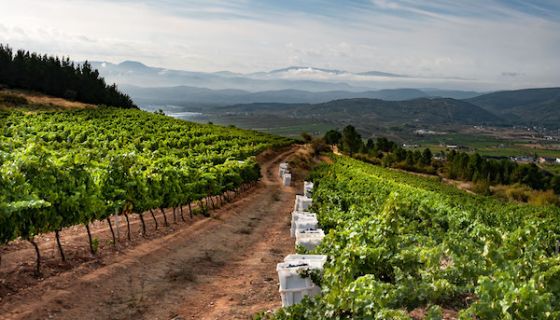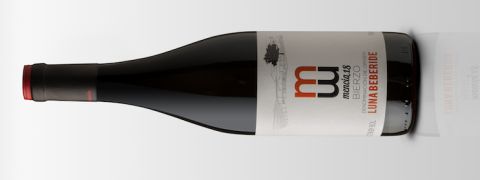From €5.75, 10.70 Swiss francs (if you buy 6 bottles), £9.95, 1,071 roubles, SG$39
I have long been fascinated by the Mencía grape of north-west Spain. The first article to mention it on this website was Some snippets from around the wine world published back in 2002. In it I spread the news that the young gun of Spanish wine Álvaro Palacios who had made his name with L’Ermita in Priorat had moved in to the then-obscure wine region Bierzo in the north west of Spain where, with his nephew Ricardo (see this guide to the Palacios family), he had launched a new operation Descendientes de J Palacios based on ancient Mencía vines.
It’s the combination of perfume and sheer juiciness that immediately appealed to me when I first tasted Mencía back in the last century, when local lore had it that Mencía might be identical to Cabernet Franc. In fact, our good friend DNA profiling (on which so much information in our Wine Grapes tome is based) has shown that it’s a distinct variety local to north-west Spain, probably in Bierzo, that is identical to the variety known as Jaen in Dão in northern Portugal. In fact, so popular has Mencía become, with varietal versions emerging from Galician DOs such as Monterrei, Ribeira Sacra and Valdeorras, I’m quite surprised that we haven’t seen more charming, early-drinking varietal Jaens from Dão – though Richard Hemming MW has tracked down a 2016 McLaren Vale Mencía.
Luna Beberide M Mencía 2018 Bierzo is a great example of the aromatic, fruity charms of the variety at a very decent price –although admittedly it is the keenly priced Wine Society that is offering it at under £10 a bottle in the UK. This Bierzo enterprise was founded in 1987 by the Luna Beberide family (a family, like the Planetas of Sicily, blessed, in the case of Luna, with a highly marketable surname). Based in the village of Cacabelos, they set about focusing on Mencía for reds and the great white wine grape of north-west Spain Godello (about which Ferran will be writing in detail very soon) at the expense of international varieties.
They make a range of Mencías at different price points. This M bottling is the company’s signature introductory wine, of which 150,000 to 180,000 bottles are made. It’s based on a mix of younger and relatively old vines, growing at between 600 and 750 m (1,970–2,460 ft) on south-facing slopes of clay-limestone. Yields are a relatively low 35 hl/ha.
Their slightly more expensive Finca La Cuesta is oak aged and their top wine, called Art, is from vines grown on the schist soils that are most valued in this part of the world. Paixar is another ambitious cuvée conceived by Alejandro Luna, who took over from his father Bernardo in 2000, together with his friends Alberto and Eduardo, sons of legendary ex Vega Sicilia winemaker Mariano Garcia of Mauro. But this M bottling of Villafranca del Bierzo fruit is pure Mencía unadorned by oak. Alejandro says of it, 'I mix old and young vines as I look for fruit and freshness in the wine. I like it a bit childlike. I like the idea of it being uncomplicated but really pleasurable.'.
My tasting note on the 13% M bottling in 2018, a dry year in which the crop was reduced by spring frosts: 'Deep, quite dark crimson. Some of the pure zest and lift of this grape variety on the nose. Beautiful balance – no oak gets in the way of the varietal expression. This would be a great teaching aid. Persists right to the end of the palate. Excellent freshness while not being remotely wimpy. Very good value.'
It won't fall off a cliff but I don't see much point in ageing this attractive, already-appealing wine, which could be drunk with or without food.
According to Wine-Searcher.com, the 2018 is already available in Spain, Germany, Switzerland, the UK, Russia, Ireland and Singapore. (So you too can get your hands on this bargain, Richard.)














